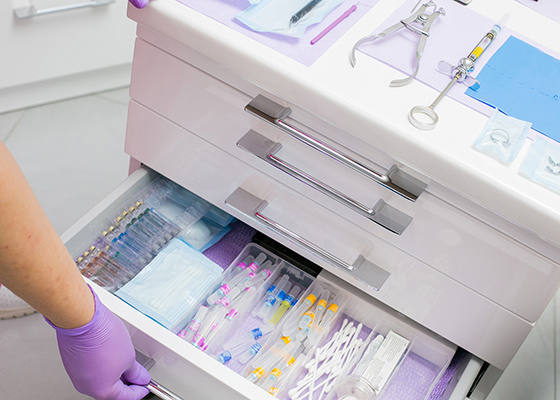Teilnahmebedingungen für das Gewinnspiel “Brain Boost Event 2025 – Gewinne 2x Teilnahmeplätze für dich und deinen Lieblingskollegen in Seefeld”
Teilnahmebedingungen:


Simplifying your workflow means more than perfecting your technique. It also means taking stock – literally. Learn why choosing fewer, simplified products could pay off in more ways than one.
During your COVID-19 office closure, did you take the opportunity to do some “spring cleaning”? Did you go through cupboards and reassess your supplies and products? If you did, it’s likely you found multiple types of adhesives and cements, expired products, many more shades of composites than you can ever use, specialized products purchased after attending a seminar, and so much more. It is never a good day when you start throwing away accumulated “stuff” that you know you won’t use, don’t know how to use, or is expired. Of course, we only get into this situation because we have the best of intentions: we’re always striving to do the best work we can to get the best outcomes for our patients. However, dental professionals often associate the path to excellence with using many different products for different clinical situations.
Let’s look at resin cements, for example. After doing some customer research worldwide, my colleagues at 3M found that a very high percentage of dentists use two to three resin cements at a given time. Of course, this doesn’t include the possible different adhesives, primers or other products needed for the bonding or cementation process. On top of that, there is a lot of confusion over when and how to use different cements in different situations. It’s probably not a surprise that cement selection and proper technique rank consistently highest as the most confusing areas for dentists, according to global customer research conducted by 3M.
Let’s face it: while it may seem like using multiple products will guarantee flexibility – and perhaps better outcomes – this thinking can lead to some undesirable consequences for a practice:
To better understand dentists’ needs as they were preparing to reopen, 3M conducted more in-depth research1, including asking dental professionals how their product choice criteria may change in the future. As a general theme, our answers indicated that when it comes to product selection, the following factors were most crucial:
In other words, we want simplicity. The results show that now more than ever, dentists want simple, high-quality products that help us achieve reliable outcomes more easily, quickly and efficiently.
This desire for easy-to-use but predictable products has been driving dental material development for some time. Just look at the number of universal-class products with multi-product features and functions being introduced into the market: each one is intended to simplify our workflow. As these universal products gain popularity, it’s only a matter of time before we’ll see more and better versions to help our practices. It won’t be long before we’re using one cement and one adhesive, each with simplified techniques and workflows, able to cement any type of indirect material including zirconia, all porcelain types and PFMs without compromising quality. Just imagine: no more guessing when to use which cement, no more stocking different cements to use with different materials and no more throwing away expired products.
Until that time comes, we have to rely on what’s on hand and commit to regularly reviewing, revising and refreshing our inventory to provide the best for our patients, our staff and our practices. And we must keep an eye on the emerging class of universal products. With manufacturers like 3M putting sophisticated science to work in pursuit of simplicity, there are bound to be exciting developments on the horizon. So, make sure you have room in your inventory for the next big breakthroughs!
Sources

How do you motivate your patients? Discover how caries risk assessments and motivational interviewing tactics can help you connect with…

Caries is a complicated multifactorial disease. In this two-part series, explore how caries risk assessments can help improve evaluation and…